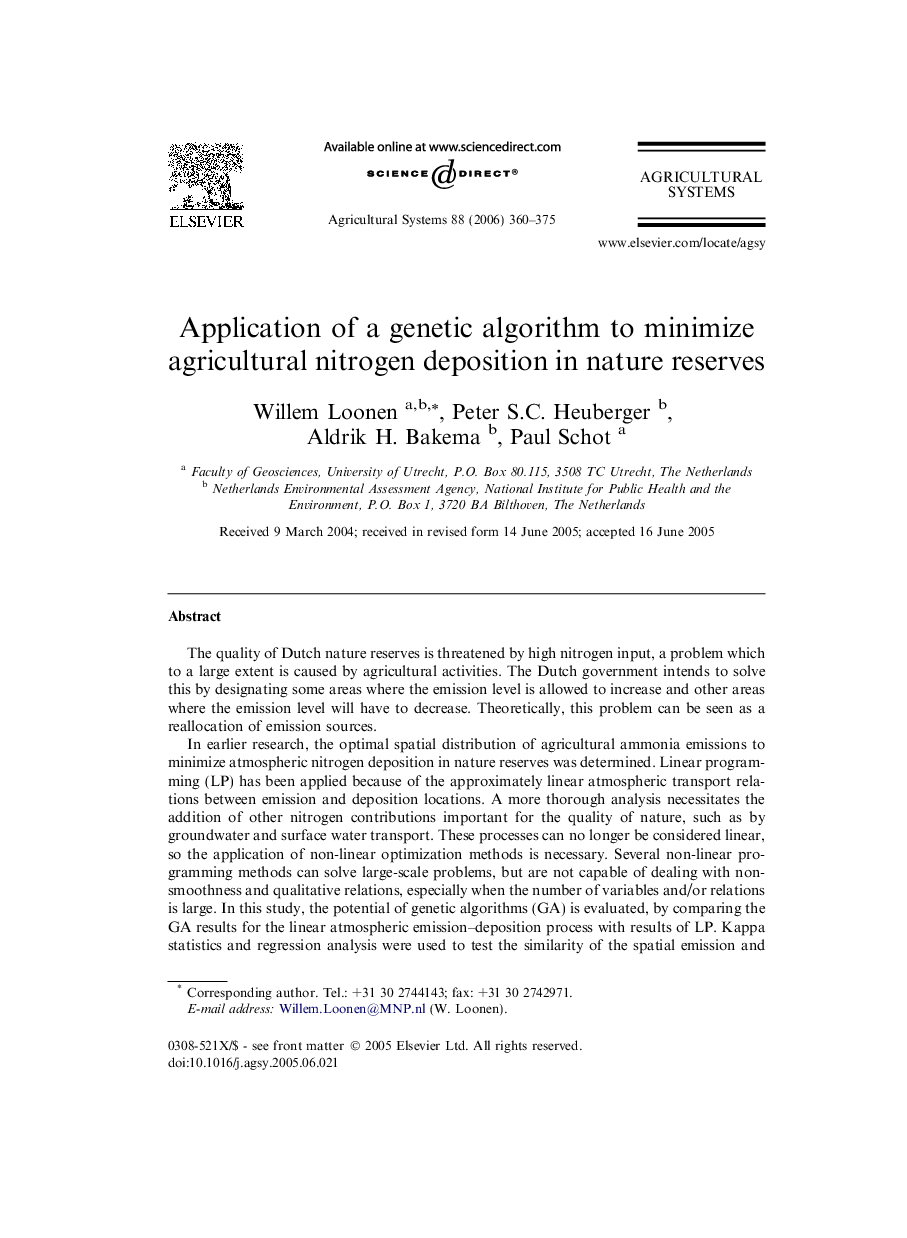| Article ID | Journal | Published Year | Pages | File Type |
|---|---|---|---|---|
| 4492106 | Agricultural Systems | 2006 | 16 Pages |
The quality of Dutch nature reserves is threatened by high nitrogen input, a problem which to a large extent is caused by agricultural activities. The Dutch government intends to solve this by designating some areas where the emission level is allowed to increase and other areas where the emission level will have to decrease. Theoretically, this problem can be seen as a reallocation of emission sources.In earlier research, the optimal spatial distribution of agricultural ammonia emissions to minimize atmospheric nitrogen deposition in nature reserves was determined. Linear programming (LP) has been applied because of the approximately linear atmospheric transport relations between emission and deposition locations. A more thorough analysis necessitates the addition of other nitrogen contributions important for the quality of nature, such as by groundwater and surface water transport. These processes can no longer be considered linear, so the application of non-linear optimization methods is necessary. Several non-linear programming methods can solve large-scale problems, but are not capable of dealing with non-smoothness and qualitative relations, especially when the number of variables and/or relations is large. In this study, the potential of genetic algorithms (GA) is evaluated, by comparing the GA results for the linear atmospheric emission–deposition process with results of LP. Kappa statistics and regression analysis were used to test the similarity of the spatial emission and deposition distributions on the GA and LP output maps. GA was shown to perform well, producing similar results to LP. Calculations in this article also showed that almost identical minimal deposition patterns may be achieved with somewhat different emission patterns. This is a potentially interesting feature for policy-makers, who may evaluate alternative emission distributions on a small scale, each with their specific socio-economic impacts, while still achieving optimal results for nature quality.
